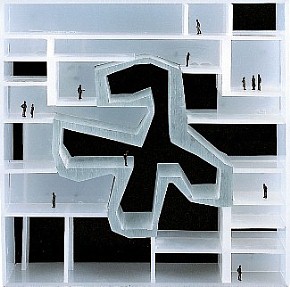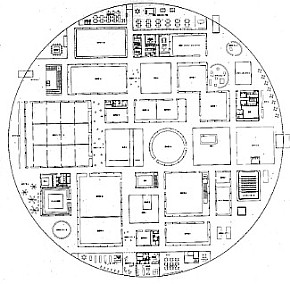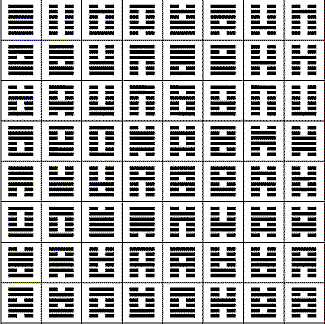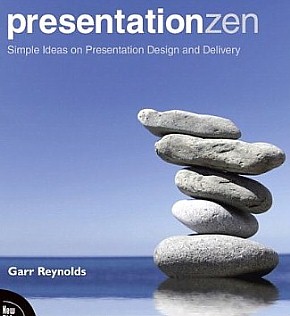2008.05.17 16:06
The Official Paradigm Shift thread
"But here is my attempt at a definition of mannerism in architecture appropriate to now:
Mannerism as Convention Tweaked--or as Modified Convention Acknowledging Ambiguity. Mannerism for architecture of our time that acknowledges conventional order rather than original expression but breaks the conventional order to accomodate complexity and contradiction and thereby engages ambiguity unambiguously. Mannerism as complexity and contradiction applied to convention--as acknowledging a conventional order that is then modified or broken to accomodate valid exceptions and acknowledge unambiguous ambiguities for an evolving era of complexity and contradiction--rather than acknowledge no order or acknowledging a totality of exceptions or acknowledging a new order so as to be original."
--Robert Venturi, Architecture as Signs and Systems, pp. 74-5.
"...I would add that you break the rules because you can't follow all the rules of all the systems all the time, or at the same time. For one thing, some will be in conflict.
So conflict between systems is a condition that evokes Mannerism."
--Denise Scott Brown, Architecture as Signs and Systems, p. 212.
(I'll have to admit limited knowledge/experience on this, but...)
Is not a primary aspect of designing via algorithmic diagramming one where "tweaks" to the program are continually accomodated throughout the entire program, thus the endproduct never exhibits stand-out exceptions, but rather exceptions that are "massaged-in", thus the endproduct is a continuum overall, and ambiguity in never even present?
Is "ambiguous algorithm" an oxymoron?
How might a mannered algorithm function?
Can algorithms treat ambiguity unambiguously?
What (mostly) Venturi describes as mannerism in architecture may well be that aspect of designing that artificial intelligence can never quite achieve.
2008.06.28 09:21
the miller house (should be more famous)
 Looks like late Le Corbusier style as Composite Order--Villa Shodham meets Heidi Weber Pavilion meets Chandigarh tapestries.
Looks like late Le Corbusier style as Composite Order--Villa Shodham meets Heidi Weber Pavilion meets Chandigarh tapestries.
What was the year of construction?
Evokes some memories of Graves' Snyderman House.

| |
2008.07.05 11:44
architecture, technology, magic & war
The point of the great pyramids today is exactly that they make no sense; we don't even know how they were built. And, unless you believe in magic, the pyramid builders used a 'technology' that is somehow beyond us right now.
Just kill the notion of "how things were always done" because that's the real myth of your argument. "How things are done" has always been a very non-homogeneous set of situations. If you look closely, computers have (already) greatly enabled an even more vast proliferation of non-homogeneous ways of doing things.
There is a detectable magic in true non-homogeneous visionariness.
Historiography is now paradoxically caught up with writing predictions of the future, and that's because a true (magical) historian actually can simultaneously write about past, present and future events.
2008.07.05 12:46
architecture, technology, magic & war
Almost all built architecture today is manifest within a regulated industry. And the regulations deal mostly with issues of safety and with issues of money (not necessarily in that order).
Visionary architecture is first manifest virtually, and sometimes, rarely even, passes through the regulations into built form.
Design/build a robot that will manifest a paradigm shift?
2008.07.26 09:18
I smell a Vorläufer
"A further study of the main house resulted in two radical options: a vertical and horizontal house, both based on the same configuration. ... By turning our initial proposal 90 degrees a vast potential was discovered in which each space can have its own personal relationship with the landscape. What used to be a conventional patio becomes a centrally located multi-level living space which gives the inhabitants an unprecedented special experience and at the same time fits the very specific demands of the program."
--description of OMA's Ascot Residence (2003).

Wonder what would happen (if anything) when the above "nine plans" are flipped up 90 degrees. For example, a flipped-up 21st Century Museum of Art...
 ...looks almost like this...
...looks almost like this...

One easy way to conceptualize a new paradigm is to invert the "set of assumptions, concepts, values, and practices that constitutes a way of viewing reality".
...or just practice the twist in front of the mirror[-copy plan].
2008.05.19: "I'm secretly working on Plan Atypical"
| |
2008.07.31 15:29
eisenman
...if you do intern at Eisenman, bone up on the I Ching before you get there, and then let it be known that the I Ching is one of your avocations via demonstrations of your meaningful chancyness. You'll have a blast!

2008.08.02 09:22
I smell a Vorläufer
There's no argument as to the existence of architectural precedents, rather that the precedents themselves manifest a nimiety of diversity.
more from Oresko...
"But probably the most important and wide-reaching effect Piranesi had upon his friend was the transmission of his notion of artistic licence. The concept of abstracting the elements of classical culture and then rearranging them into a pattern of one's own was developed and expounded largely by Piranesi. As with Inigo Jones, it is obvious that Robert Adam cast his intellectual net widely and borrowed from a staggeringly rich variety of classical, Renaissance, Baroque and contemporary sources. But, again with Jones, his scholarly tabulation of a seemingly inexhaustible number of architectural details and the concomitant reliance upon earlier modes for inspiration did not result in Adam's being a mere copyist or pasticheur. Elaborating upon Piranesi's doctrine of artistic licence and relying upon what he saw as the authentically classical approval of the individual artist's genius, Adam blended his elements, what ever their source, into his own personal manner, and the compound which resulted was always pure Adam."
Is Unarrested Architecture written by otherness?
"Rather is it a matter of destabilizing the current assumptions by admitting otherness in a way that disturbs the very concept of architecture and the architect. It is time for expanded architects to publicly explore the enigmas and destabilizing elements of all buildings rather than repress them, allowing the mystery or instability of the built object that attracted them in the first place to come to the surface, and admitting mystery into their own stories."
--Wigley, 2006.
You know, Wigley actually told me it was indeed fate that I was there (in Brussels, 1999), because I had already manifest what was the point of the closing address he was to deliver the next day. I guess he smelled a Vorläufer.
| |
2008.08.13 15:57
has the sun finally set on oma?
As to what's next, maybe this, or this, or this, or this. And there's always hope.
2008.08.15 08:36
has the sun finally set on oma?
The sun will finally set on OMA/AMO if Koolhaas becomes risk-averse.
How many other architects actually seek out the risk? It is indeed Koolhaas' continual seeking-out-the-risk that sets Koolhaas as an architectural designer apart. The "envelop" really doesn't get pushed without taking a risk, and Koolhaas knows that full well.
Apropos, I cannot think of a riskier work of architecture than CCTV.
risk : 1. exposure to the chance of injury or loss; a hazard or dangerous chance
2008.08.15 10:33
has the sun finally set on oma?
The Guggenheim Las Vegas was a risk in a town that is all about risk. Apropos again, contextual even.
2008.08.17 12:03
has the sun finally set on oma?
I just looked up trend spotting on google because that's what current architectural theory/history wants to be good at but isn't, and followed a link and then another link, and there it was, the conceptual model of my next building...

I too want to be a risky architect.
| |
2008.08.22 22:05
peter's canon
Just did a side by side chronological overview of the work of Gehry and Eisenman, and in terms of architectonic, geometrical experimentation, Gehry manifests a greater and more mature repertoire.
Eisenman goes through a lot of intellectual and theoretical rigor to ultimately arrive at his geometry, but Gehry simply demonstrates that the intellectual and theoretical rigor isn't even necessary when it come to unprecedented architectonic geometries.
The only reason Eisenman's approach gets respect is because it fits well into 'higher' education. To have students pay large amounts of money to then learn that, "Hey, just look at Gehry, you can design pretty much anyway you want these days." just wouldn't go over well.
2008.08.23 21:06
peter's canon
Personally, I like seeing all the study models of various projects by various architects. I like it because it clearly demonstrates just how pliant architectural designing can be. And I seriously consider the notion that it may well be Gehry that best introduced architectonic pliancy to the profession.
Is architectonic pliancy in somewhat sharp contrast to Eisenman's method? Up to a certain point (in time) I'd say yes. And when Eisenman's work started exhibiting some measure of pliancy, that's where I start to see Gehry's influence.
Have Gehry's designs of late become somewhat predictable and/or seemingly uninspired? Perhaps the pliability metaphor applies here too; perhaps the pliancy has been lost for being stretched too much and too far.
Another thing I like about all the study models is that so often almost any one of the models looks to be an exciting and/or interesting building. And often too it is within the collection of study models that one finds the riskier designs. "Getting it right" isn't the only operation going on. There's also a having-to-let-go of good designs.
2008.08.23 22:55
peter's canon
To suspect that Eisenman's process conceals a much more pliant process doesn't eliminate Gehry's already self-evident very pliant process. Gehry's entire oeuvre is evidence of a very pliant design process.
Has Eisenman really been designing a process? It looks to me more like he's been designing a determinism, and I am personally aware of an aspect of Eisenman's process that proves very inflexible.
2008.08.26 16:50
"wildly influential" or really only virtually influential?
But is what Woods produces really anything more than an aesthetic?
2008.08.26 20:17
"wildly influential" or really only virtually influential?
It's not a throwing out of the critical position, it's looking at the manifestations of the critical position and finding not much more than an aesthetic.
|